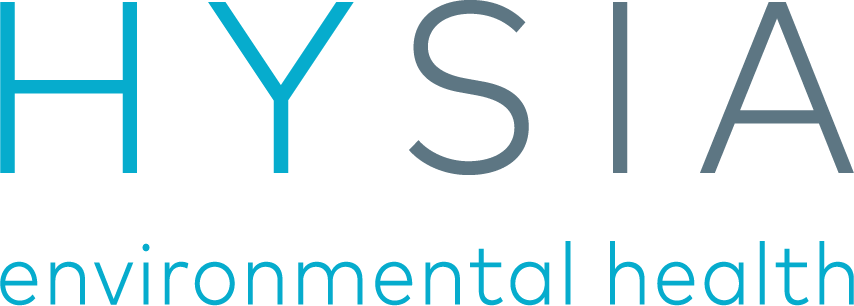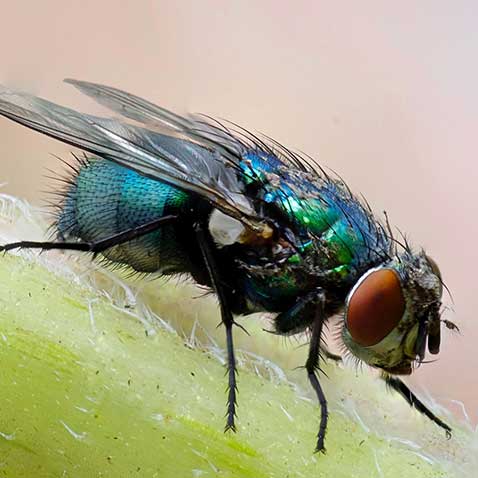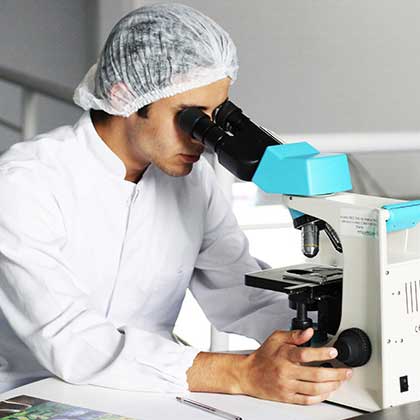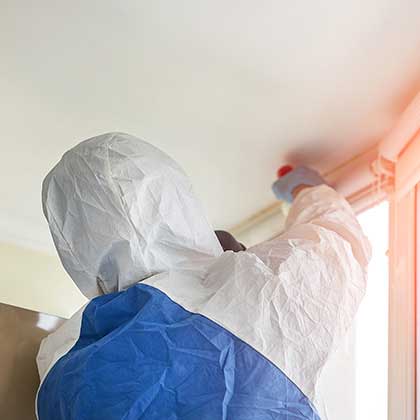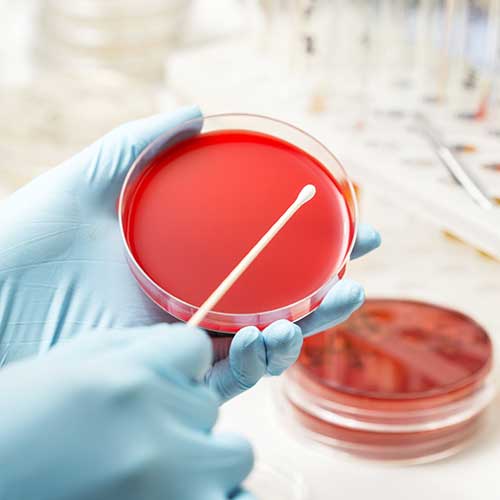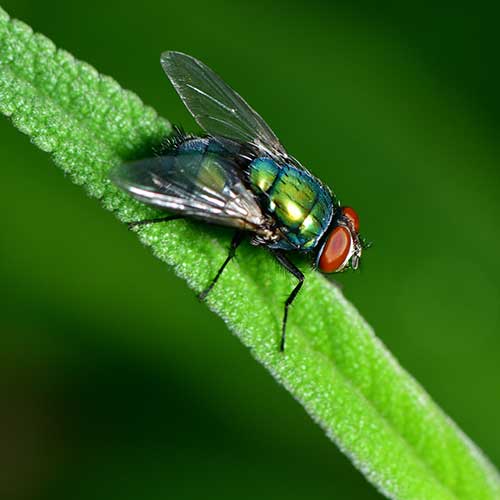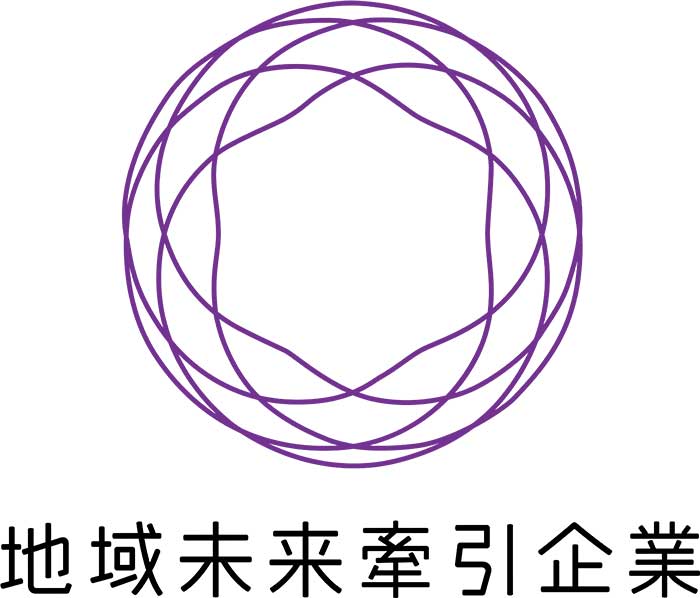IPM(総合的有害生物管理)
環境衛生管理のHYSIA > 事業紹介(改善対策一覧) > IPM(有害生物制御)[ペストコントロール(防虫防鼠対策)/各種防除施工]
We utilize IPM theory (Integrated Pest Management) to design and implement pest control programs (for pests such as insects or rats) compliant with HACCP principles and food safety management standards. By observing and using data from rats and flying/walking insects we analyze the source and route of the infestation and implement effective countermeasures. We select methods that are as safe, economic and effective as possible and which will have the least environmental impact.
Surveys and Analysis
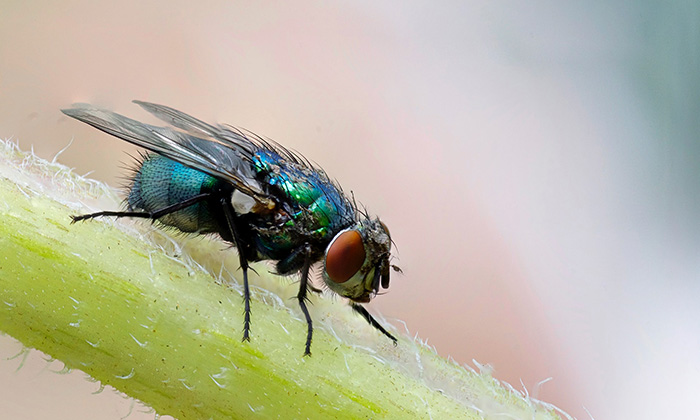
01 Surveys (insects)
First of all, we check individual insects and insect traces to identify the species in so far as is possible. We check traps, dead insects, frass, nest traces, eggs, larva movement trails and evidence of insect damage to stored food or paper to identify the species. Then, taking ecological factors into account, we can hypothesize whether the infestation has arisen naturally or is due to external incursion. On this basis, we review the characteristics of the infested facility and its usage, and carry out an internal and external environmental survey so we can at the same time verify the hypothesis and decide upon the key countermeasures to be implemented.
02 Surveys (Brown rats, black rats, mice)
We identify the species of rodents through specimens from traps or the shape, color and size of droppings. Brown rats are good swimmers so we typically assume they find entry through waterways; black rats nest in high places, so we assume they will have runways above ceilings or along walls and check for nesting sites and paths.
Setting Objectives
When proposing a pest control plan, we start by setting out an objective and target to be achieved. Targets will vary depending on client expectations, the nature of the facility, the species involved, or the extent of the pest's habitat. Targets also need to be quantifiable in order to appropriately evaluate the effectiveness and legitimacy of measures. We take into account considerations such as whether the task is to reduce the number of Psocoptera caught in the cleanroom of a pharmaceutical factory from five in a month to zero or to reduce the number of German cockroaches found in a restaurant from an average of 20 every month to one or less. The required implementation method, its frequency and the extent of measures requested by the customer will vary according to the objectives set.

Monitoring
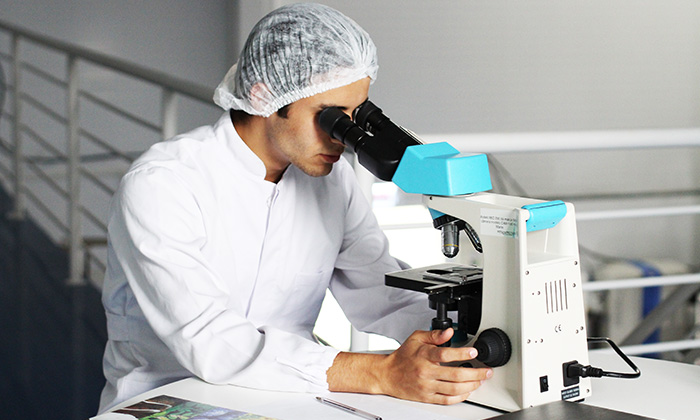
Traps are installed in the facility under observation to identify insect species and monitor variations in trends such as insect numbers. These are useful for identifying the source and route of the infestation to ensure more effective control measures and to determine their effectiveness. Recording the capture coefficient and setting the required response level in advance ensures that the correct countermeasures are put in place at the right time.
Implementation of Protective Measures
01 Environmental Control
We aim to bring about fundamental improvement through creating environments that are not conducive to insect incursions. We work with clients to improve the environment and eliminate the causes of pests through control of temperature, humidity and air flow, and removal of food residue and water that pests can feed on.
02 Physical Control
If pests are already present in large quantities and it is necessary to reduce numbers, we will physically remove or eliminate them, using measures such as setting traps, plugging gaps at the source or entry pathways, blocking holes, vacuuming (suction) or heat treatment.
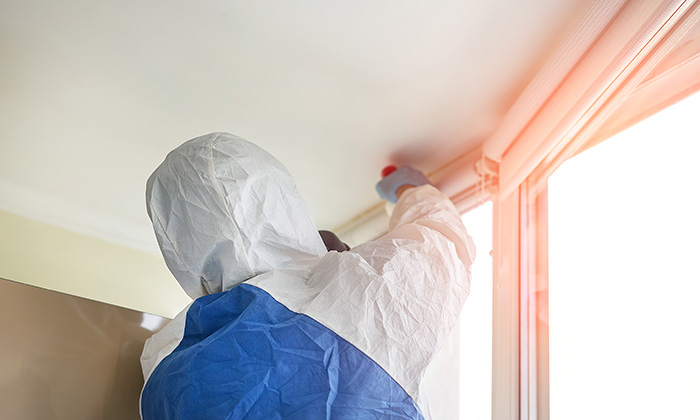
03 Chemical Control
Where environmental or physical control is not sufficient, we may use chemical measures such as insecticide provided we have the customer’s consent. We only use specifically targeted formulations and methods of implementation that have no other side effects, and always take environmental impact into account.
04 Biological Control
We utilize biological methods such as pheromones to control pests. For example, we apply ecology to control stored-food pests such as tobacco beetles and pyralid moths using pheromone traps that disrupt the mating process or methods of interference with insect communication.
05 ICT and the Latest Technology
Semco’s Pest-Vision (automatic insect monitoring system) utilizes the IoT and AI-based insect identification techniques to enable the automatic collection and analysis of data that would previously have been painstakingly collated manually. This is invaluable to ensure a more appropriate and timely response to pest incidences.
Reports and Improvement Measures

Effective implementation of IPM requires accurate status updates for the client's management and staff in the field, and team cooperation by the parties concerned to address the issues. We provide reports on the measures implemented, their effectiveness, status and recommendations for improvement as a matter of course. In addition, if appropriate, we will follow up with seminars on hygiene management and pest prevention for employees, or team workshops to explain guidelines and required courses of action.
